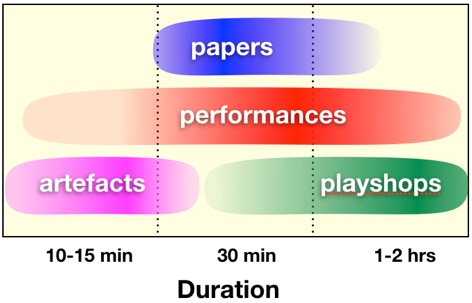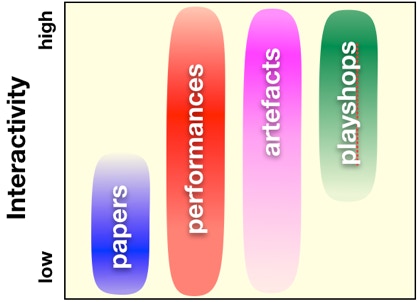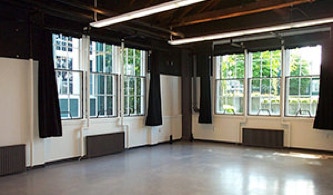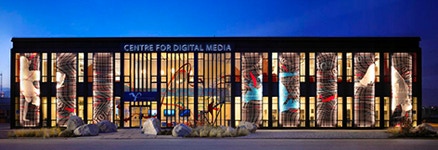Acting Cybernetically
2019 Annual Conference of the American Society for Cybernetics
Ways to Participate


The conference will include a varied program of sessions with different degrees
of interactivity, taking place in various venues and a having a range of times.
Performances
ASC conferences have long included performance components alongside more traditional academic presentations. This year’s theme, Acting Cybernetically, is particularly well-suited to performative discourse and intervention. All performances must engage with the conference theme and clearly embody/enact cybernetic principles. Performances may include, but are not limited to theatre, poetry, music, dance, and performance art. They may be integrated with papers or panels or standalone evening events and take as long as two hours
Lively Artefacts
Continuing the tradition of exploring cybernetic questions through interactive installations and devices, submissions are invited in any media and format, including software, robotics, physical objects, installations, digital media artworks, and immersive experiences. Submissions should demonstrate, enact, and/or provoke cybernetic questions, processes, and experiences, and may be displayed throughout the conference or demonstrated in a specific session (as well as being included in the Afternoon at the Fun Palace event).
scroll down for Submission and Publication
Academic Papers
Papers are not expected to be highly interactive, and will generally be 20 minutes plus 10 min discussion. Though they are expected to be fairly theoretical, submitted papers must engage the conference theme of “Acting” and address concrete implications for social and/or performative cybernetic praxis.

Playshops
Playshops are experiential, interactive, participatory seminars. They are intended to evoke understanding of a complex dynamic process or idea through experiential engagement. The experience may be directly embodied, relationally revealed, or constructed using artifacts. Playshops can as short as half an hour or take up to two hours. The notion of “play” is intended to include the attitude of openess to outcome, but both the manifestation and subject are should be relevant to the conference theme.
Multiple Venues

UBC Campus Conference site
• 60 seat black box studio theatre with lighting grid
• large studio/classroom with green screen and projection capabilities
• large rehearsal studio with lighting grid
• two small rehearsal studios: one with mirrors and ballet bar

Fun Palace at Centre for Digital Media
Short interactive performances, playshops and artefacts that can be repeated multiple times can be hosted at the Fun Palace evening event. more
Submission Process
Papers
Performances
Playshops
Artefacts
proposal contents
An extended abstract of up to 1,000 words.
Academic papers will be peer reviewed by two referees from the conference Review Committee. Notification of acceptance will be issued on a rolling basis.
A description including title, description, any requirements for equipment or technical support and indicate the preferred venue.
A description including title, planned activities, duration, number of participants, any required resources, and preferred venue. If short and repeatable as an interactive exhibit, consider the Fun Palace.
A description of the artefact, with or without a demonstrator, space required and whether a intended as display item at the UBC site or part of the Play Palace event.
due date March 29
April 1
April 1
April 1
Proposals for Performances, Playshops, and Artefacts will be reviewed by the Organizing Committee. Acceptance will take into account the degree to which the proposal relates to the conference theme, resource requirements and space constraints.
Publication Opportunities
Subsequently to the conference, there will be opportunities for participants to further develop their work for submission to special issues of academic journals and the possibility of inclusion as a book chapter, subject to further rounds of peer review and rewriting.
